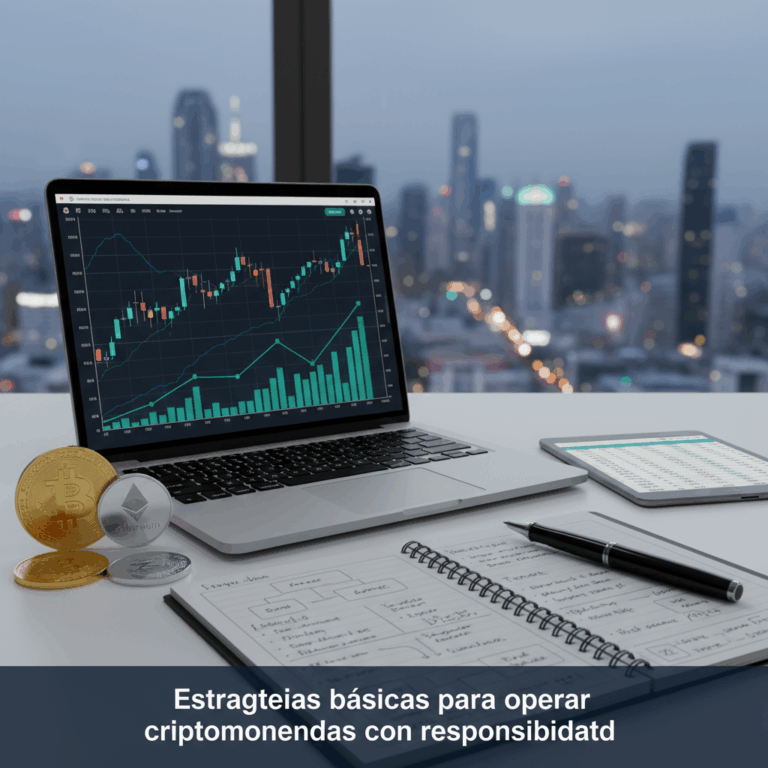Fundamental strategies for trading cryptocurrencies
Cryptocurrency trading requires robust strategies that protect capital and enable data-driven decision-making. Understanding these techniques is key to successful trading.
Two of the fundamental strategies are Dollar Cost Averaging (DCA) and trend following. These allow investors to reduce risk and better capitalize on market fluctuations.
Adopting these basic methodologies promotes responsible capital management and minimizes the impact of the volatility inherent in the crypto market.
Dollar Average Cost (DCA)
Dollar-cost averaging (DCA) involves investing fixed amounts in cryptocurrencies at regular intervals, regardless of the market price. This technique reduces the risk associated with buying at price peaks.
Spreading out purchases over time helps smooth out price fluctuations and avoids decisions based on emotions or impulses. It's ideal for beginners looking for security.
By applying DCA, a more stable position is built and the pressure of hitting the right time to invest is avoided, facilitating a gradual entry into the crypto market.
Trend tracking
This strategy is based on identifying whether the market is trending upward or downward and trading in the same direction. Technical analysis is fundamental to this technique.
Tools such as moving averages, RSI, and MACD are used to detect signals that indicate the continuation or change of trend, facilitating informed and objective decisions.
Trading with the trend improves the chances of success, as it takes advantage of established movements rather than trying to predict sudden market turns.
Trading techniques according to the time horizon
Cryptocurrency trading can be tailored to different time horizons, from short-term trades to medium-term strategies. Each approach requires specific techniques and tools.
Choosing the right technique based on available time and risk tolerance is essential to maximizing profits and minimizing losses in a market as volatile as crypto.
Understanding swing trading and day trading helps you trade with greater discipline and efficiency, adapting to market movements and personal goals.
Swing trading: short and medium term trading
Swing trading is based on taking advantage of price fluctuations over days or weeks, seeking to capture temporary trends in the cryptocurrency market.
This technique requires technical analysis and patience to identify optimal entry and exit points, taking advantage of natural movements without constant supervision.
Using technical indicators such as moving averages and chart patterns is essential to properly synchronize trades and manage risk.
Swing trading is ideal for those who want a balance between trading frequency and time to calmly analyze the market.
Day trading: advanced intraday trading
Day trading involves buying and selling crypto assets within the same day to take advantage of small price fluctuations, requiring great speed and attention.
This method requires advanced knowledge of technical analysis, high concentration, and strict risk management to avoid significant losses.
Recommended only for experienced traders, day trading has the potential for quick profits, but it also presents high levels of stress and volatility.
It is essential to have tools such as stop loss orders and high-speed platforms to execute operations efficiently.
Risk management in crypto trading
Risk management is vital to protecting capital in the volatile cryptocurrency market. Implementing appropriate controls helps minimize losses and preserve investment.
Using specific tools allows for efficient control, promoting more rational decisions and reducing the negative impact of adverse movements.
Adequate diversification and the use of mechanisms to limit losses are essential for those seeking to operate sustainably.
Tools for loss control and diversification
Among the most important tools are stop loss orders, which allow you to limit losses by automatically closing positions if the price reaches a predefined level.
These orders help avoid excessive losses and protect capital against sudden market movements, especially during times of high volatility.
Furthermore, portfolio diversification reduces risk by spreading investments across different assets, avoiding dependence on a single token or trend.
Investing only the capital you are willing to lose and starting with small amounts are also recommended practices for controlling exposure.
Key aspects for safe operation
To operate safely in the crypto market, it's essential to stay informed and have ongoing training. The market's dynamic nature demands that you keep up-to-date with the latest developments.
Furthermore, digital protection and asset security must be priorities. Adopting best practices and specific tools helps minimize risks related to fraud and hacking.
These combined aspects guarantee a safer and more responsible experience in cryptocurrency trading, essential to protect the investor's capital and emotional well-being.
Continuing education and market updates
The crypto market changes rapidly, so a ongoing training It is key to adapting to new trends, regulations, and emerging technologies.
Following reliable news sources and participating in courses or webinars allows for better decision-making and avoids unnecessary risks arising from a lack of knowledge.
The update reflects a proactive attitude that helps recognize legitimate opportunities and alerts about potential scams or market manipulation.
Digital security and asset protection
Use secure wallets and activate mechanisms such as two-factor authentication These are essential steps to safeguard digital assets against unauthorized access.
Adopting good practices such as using strong passwords, avoiding public networks for transactions, and keeping software up to date significantly reduces the risk of losses.
Complementing these measures with adequate diversification and external backups ensures comprehensive protection against potential attacks or technical failures.






